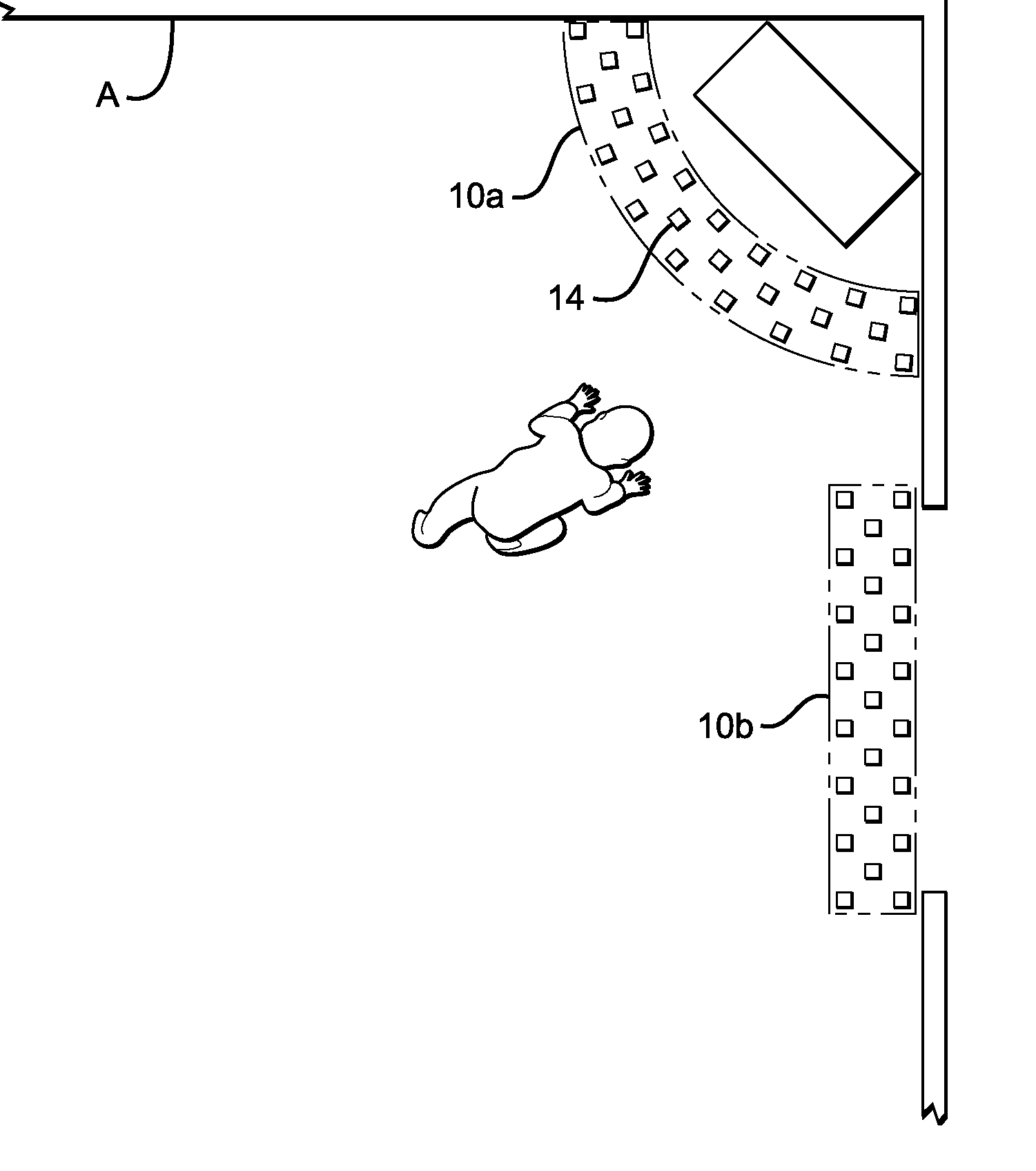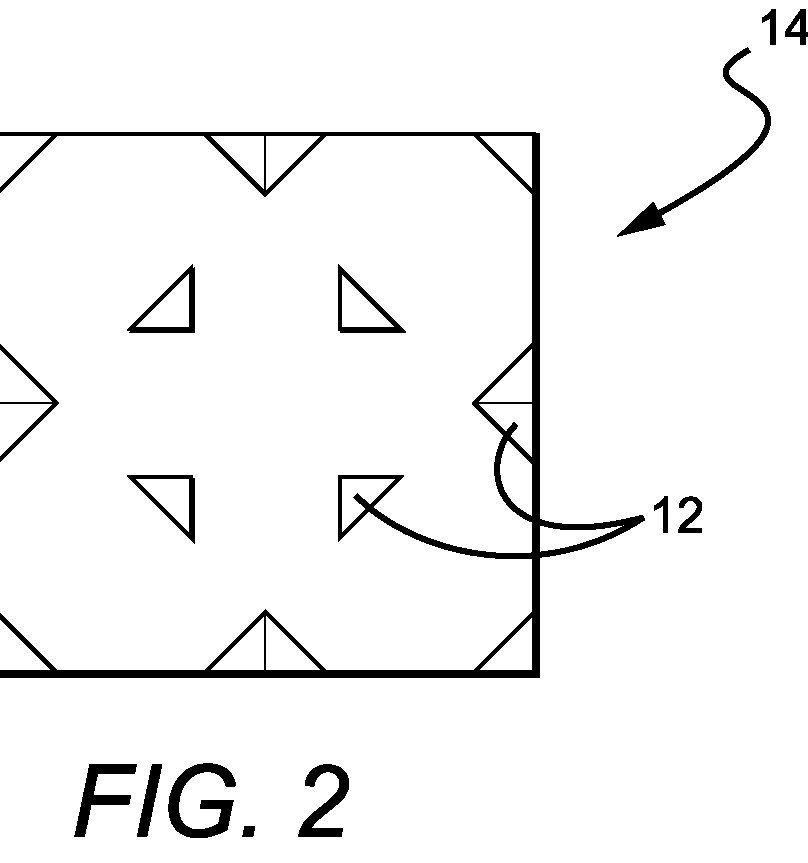Method for limiting the movement of an infant in a particular direction
a technology of limiting the movement of an infant and limiting the direction, which is applied in the direction of fluid mattresses, sofas, safety guards, etc., can solve the problems of limiting the movement of pens, glass or keepsakes can be broken or damaged, and items can be dangerous to children, so as to achieve the effect of less likely to cry
- Summary
- Abstract
- Description
- Claims
- Application Information
AI Technical Summary
Benefits of technology
Problems solved by technology
Method used
Image
Examples
Embodiment Construction
[0029]FIG. 1 illustrates the use of my barrier 10a or 10b to limit the movement of an infant in a room, a portion of which is defined by “A”. In this illustration, barriers are depicted by 10a and 10b. Each barrier is comprised of a plurality of horizontal units 14. Each barrier can be a sheeting material upon which horizontal units are attached or the barrier simply marks the outer perimeter of the arranged horizontal units attached directly to a floor surface.
[0030] Barrier 1a is placed in front of a piece of furniture such as a cabinet or television or stereo and barrier 10b is placed in the space leading to another room. Barrier 10a is of a sufficient length and width to prevent the infant or toddler from reaching over and barrier. Barrier 10b is of a sufficient length and width to prevent the infant or toddler from walking over.
[0031] Barriers 10a and 10b comprise the placement of a plurality of horizontal units 14 upon each of which are a plurality of upward extending units ...
PUM
 Login to View More
Login to View More Abstract
Description
Claims
Application Information
 Login to View More
Login to View More - R&D
- Intellectual Property
- Life Sciences
- Materials
- Tech Scout
- Unparalleled Data Quality
- Higher Quality Content
- 60% Fewer Hallucinations
Browse by: Latest US Patents, China's latest patents, Technical Efficacy Thesaurus, Application Domain, Technology Topic, Popular Technical Reports.
© 2025 PatSnap. All rights reserved.Legal|Privacy policy|Modern Slavery Act Transparency Statement|Sitemap|About US| Contact US: help@patsnap.com



